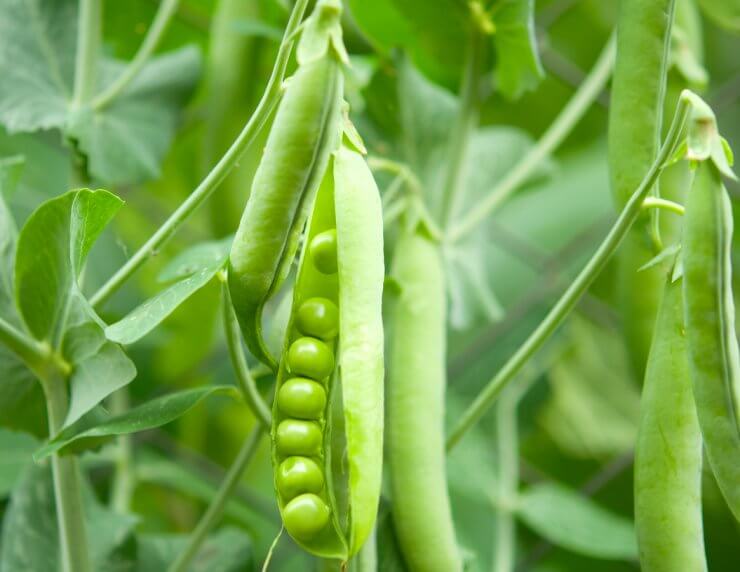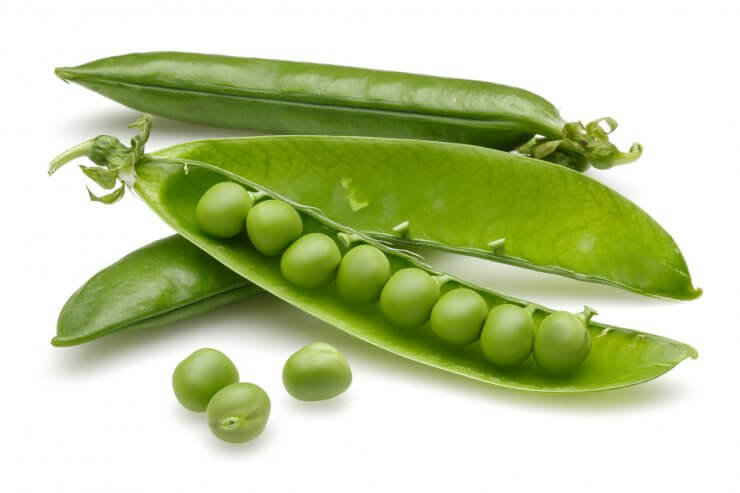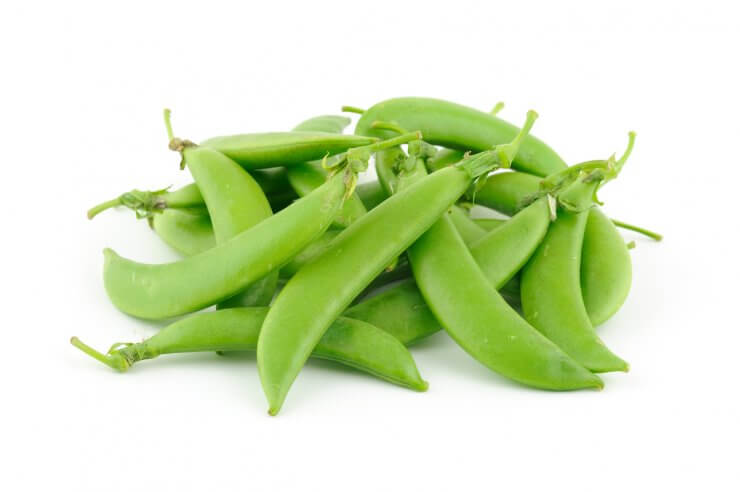
Peas in their pod.
Peas come in three main types: English, snow peas, and sugar snap. English peas, also known as shelling or garden peas (Pisum sativum ssp. sativum), produce inedible pods from which large, edible peas are harvested.
Snow peas (Pisum sativum var. macrocarpon) produce edible flat pods with very small seeds inside.
Snap peas (Pisum sativum var. macrocarpon ser. cv.), also known as sugar snap, are a cross between English and snow peas, producing tender, edible pods with full-size peas.

English peas
English peas are the most common type of peas. Their curved, cylindrical pods are fibrous and tough, but they contain plump, round, sweet peas. English peas must be shelled, releasing the emerald orbs for eating. The extra work is worth it, as pre-shelled grocery store peas do not compare to those fresh from your garden. Popular varieties of English peas include Wando, Garden Sweet, and Early Perfection.

Snow peas
Snow peas are flat with tiny pea seeds inside. In fact, snow peas are grown for their edible pods rather than the seeds. Snow peas are often referred to as Chinese peas because they’re featured in Chinese cuisine. In French, they’re called mangetout, which means “to eat it all.” And it’s true—you can eat snow peas right off the vine. Popular snow pea varieties include Snowbird, Sugar Daddy, and Avalanche.

Sugar snap peas
Sugar snap peas resemble English peas, but their pods are slightly more cylindrical than garden peas. Sugar snap peas can be eaten pod and all, without shelling. The pods are thick, sweet, and crunchy. Sugar snap peas are a hybrid of snow peas and a mutant garden pea. This type of pea is also more tolerant of hot weather than garden peas. Favorite sugar snap peas include Cascadia, Sugar Ann, and Super Sugar Snap.
Have you tried growing all three types of peas? What challenges have you faced with growing peas? Which type do you prefer to eat? Please share your opinion.


 Previous
Previous


Where do crowder peas-field peas-purple hull peas, etc. fall in with regard to your pea classification? Or are they considered beans?
The ones you listed are classified as beans in a technical sense, and are actually subspecies of the cowpea. The cowpea is a legume that belongs to the Fabaceae family, and these varieties fall within that classification.
Not realizing they are the same species, we grew snow peas and sugar snap peas a couple of years ago and they cross-pollinated several feet on both sides of the area along the fence where they were adjacent. The fat snow peas and flat sugar snaps were tasty. Finding a preference for sugar snaps, that’s all we grow now. Seeds sewn directly into the soil has proven to be the best way to grow them in our relatively mild climate: Santa Rosa CA. We plant in December. The sugar snaps climb our 7-foot tall deer fence and then grow down the other side. They’re my favorite green vegetable. I eat as many while harvesting by the fence as I do at home. Scout
Hi Scout,
Thanks for sharing! My friend’s dogs love sugar snaps too, and they are one of their favorite treats!
Norann